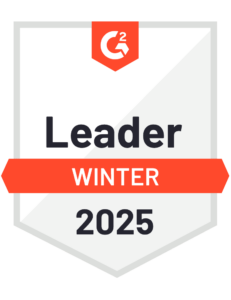What is General Ledger Reconciliation?
Blog post
Share
What is general ledger reconciliation? In a nutshell, general ledger reconciliation involves comparing information entered into a company’s general ledger with information from external sources including bank statements, receipts, invoices and a variety of other financial documents. The ultimate goal of general ledger reconciliation is to ensure a company’s financial records dovetail with their actual financial activities.
What Is a General Ledger?
A general ledger is a record of a company’s financial transactions. The general ledger typically breaks financial information down into the following five categories:
- Assets
- Equity
- Expenses
- Income
- Liabilities
These can, and often are, broken down into subledgers that contain data of an increasingly granular character.
How Do Businesses Use General Ledgers?
The general ledger serves a variety of important purposes that help ensure the financial integrity of a business or organization including but not necessarily limited to:
Recording financial transactions
This is the primary and most obvious reason businesses maintain a general ledger. Financial transactions are recorded within the ledger in a systematic fashion. Each and every transaction is entered into the correct category (Assets, Equity, Expenses, Income or Liabilities) and, if applicable, the appropriate subledger.
Tracking account balances
The general ledger is used to maintain a running balance of each account showing their current status so that business leaders have a clear picture of the financial state of the organization, its position and its current performance.
Helping to facilitate financial reporting
Data from the general ledger is used to prepare a variety of financial statements including cash flow statements, income statements and the company balance sheet. Such statements are of vital importance to business leaders and stakeholders.
Enabling decision making
Managers and executives need accurate financial information if they are to make decisions that are in the best interest of the business. The general ledger allows them to factor financial trends, account balances and financial ratios into their decision-making process.
Budgeting
Company budgets and forecasts are typically based on information contained in the general ledger. The general ledger enables managers to project future performance, set financial goals and allocate resources in a way that is in harmony with financial reality.
Supporting compliance and audits
The general ledger, along with various associated documents, is used to help auditors verify the accuracy of financial statements and to ensure compliance with accounting principles and regulatory requirements.
Generating trial balances
A trial balance is a company report that lists the balances of general ledger accounts at a specific point in time. The trial balance is used as a method of error detection and to make any necessary adjustments to the ledger itself.
Is a General Ledger the Same as a Balance Sheet?
A balance sheet is a type of external report in the same vein as cash flow and income statements. The general ledger is not an official report. It is simply a record of raw financial data that accountants, managers, executives and others can use as a reference when making official reports, budget projections and more.
Key Steps Involved in General Ledger Reconciliation
The process of general reconciliation typically takes place once the financial reporting period has come to an end. Company accountants go through the various accounts in the ledger to verify the accuracy of each balance. The general reconciliation process itself typically involves the following steps:
Step 1: Gathering documents: The first step in general ledger reconciliation is to gather all relevant documents such as bank statements, receipts and more related to the accounting period in question.
Step 2: Comparing transactions: The next step is to compare those documents with what has been recorded in the general ledger with the aim of verifying their accuracy or identifying issues.
Step 3: Analyzing discrepancies: If discrepancies are identified, they must be analyzed to determine their cause. Are they the result of timing differences, human error or some other factor?
Step 4: Making adjustments: If discrepancies cannot be satisfactorily explained, appropriate adjustments must be made to the general ledger to reconcile the differences.
Step 5: Verification: Once adjustments have been made to the general ledger, they must be verified to ensure their accuracy and properly documented so as to create a clear audit trail.
Step 6: Balance reconciliation: Once any adjustments have been made and verified, it’s time to ensure the ending balances in the ledger match the balances indicated by the external documents. If they do not, further investigation and adjustments will be required until they do.
Benefits of General Ledger Reconciliation
The general ledger reconciliation process, though often cumbersome, provides a host of benefits for businesses including:
Ensuring the reliability of financial statements
It is vital that businesses produce accurate and reliable financial statements such as balance sheets and income statements. General ledger reconciliation ensures those statements accurately reflect the company’s financial standing and current performance.
Fraud detection
General ledger reconciliation is one of the best ways known to uncover fraud and irregularities in a company’s financial transactions. Regular general ledger reconciliation can also act as a powerful deterrent to fraudulent activity.
Enhanced decision making
If managers are going to make sound decisions regarding the company’s direction, it is imperative they have reliable financial information to base those decisions on. General ledger reconciliation ensures that financial information is accurate and up to date.
Compliance with financial reporting guidelines
Many regulatory bodies require businesses to perform general ledger reconciliation in order to ensure they are in compliance with reporting guidelines. Failure to comply with such regulations can lead to significant sanctions and perhaps, legal issues.
Greater transparency
The reconciliation process generates a clear audit trail that can be used by external auditors to verify financial data. A high degree of transparency is also important to investors, lenders and other external stakeholders, as well as various regulatory bodies.
Greater efficiency with automated reconciliation
Every business aspires to be as efficient as possible. Automating various aspects of the general ledger reconciliation process can translate into cost saving, not to mention greater data accuracy. Much of the manual reconciliation process involves repetitive tasks. Tasks that can be easily automated these days.
Risk mitigation
General ledger reconciliation helps identify and mitigate financial risk born of data entry errors, unauthorized transactions and other discrepancies that could potentially have serious negative consequences for the company’s overall financial health.
Better cash management
Reconciliation provides a clear picture of the state of the company’s finances, including the company’s cash position. This enables business leaders to make well-informed decisions regarding the management of the company’s cash resources.
More reliable budgeting
What is general ledger reconciliation? Many business owners will tell you it is their most important tool when it comes to creating reliable budgets and business forecasts. Without the kind of accurate and reliable information generated by reconciliation, many businesses would be operating in the financial dark.
How Trintech Software Can Streamline the General Ledger Reconciliation Process
Specialized financial software can go a long way toward streamlining the general ledger reconciliation process, reducing the amount of time involved and at the same time, ensuring the results are more accurate. Trintech accounting reconciliation software can:
Automatically reconcile transactions
Trintech accounting reconciliation software employs sophisticated matching algorithms that enable you to automate the process of reconciling most transactions. You can also create customized rules specific to your enterprise that makes the identification of discrepancies much faster and easier.
Import data automatically
Trintech reconciliation software can automatically import financial data from a variety of sources including receipts, bank statements, credit card statements, invoices and more. Trintech can also push specific data back to the ledger system to save time on items such as routine entries, etc. No more need to manually enter most such information.
Produce automatic alerts
Trintech reconciliation software can produce automatic alerts whenever it detects discrepancies or exceptions. This helps speed up the investigative process so that little problems can be resolved before they become major problems.
Enhance transparency
Accounting reconciliation software documents all reconciliation activity thereby creating a clear and transparent audit trail. That kind of enhanced transparency is crucial if you are to facilitate external audits and demonstrate compliance with various reporting rules and regulations.
Streamline workflow
By taking over repetitive reconciliation tasks software can streamline the reconciliation process to a great degree. Account reconciliation software can also enhance collaboration among team members tasked with performing general ledger reconciliation.
Integrate with ERP systems
Trintech reconciliation software can seamlessly integrate with your Enterprise Resource Planning (ERP) systems enabling trouble-free data flow between various financial modules. This enables you to integrate general ledger reconciliation into the greater financial management system of your business.
Enable compliance
Trintech accounting reconciliation software is designed to aid in compliance with various accounting standards, tax regulations and other reporting requirements. Compliance checks can be performed automatically, and compliant financial statements generated.
Enable trend analysis
Trintech can easily compare current data to historical data thereby enabling you to analyze financial trends and identify patterns that could have a significant impact on future decision-making and business strategies.
Conclusion
What is general ledger reconciliation? It is the process of verifying a company’s financial information by comparing the general ledger to external documents. While it has historically been a labor-intensive process, that is beginning to change thanks to Trintech account reconciliation software.
Learn more in our Finance & Accounting Glossary






